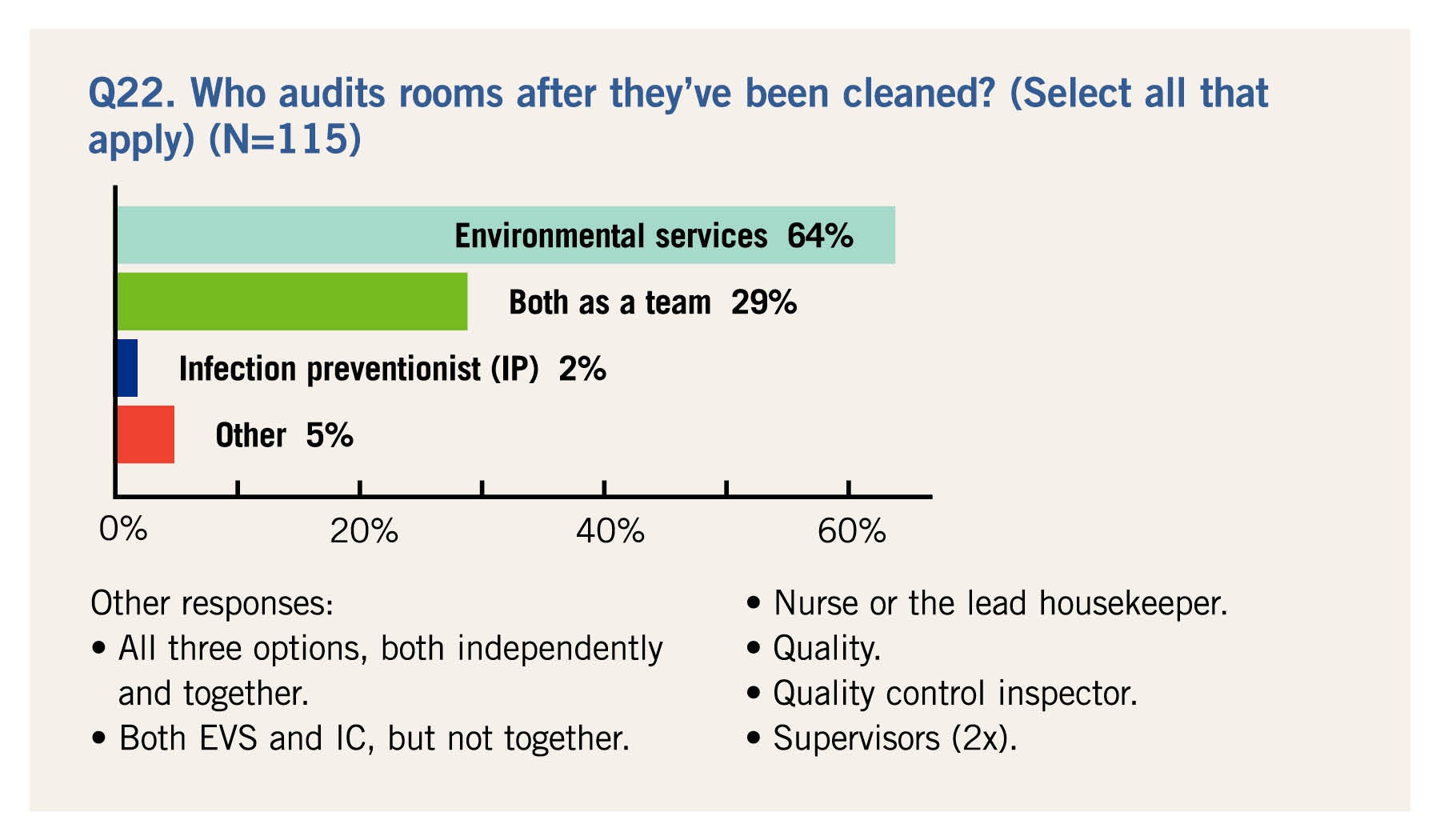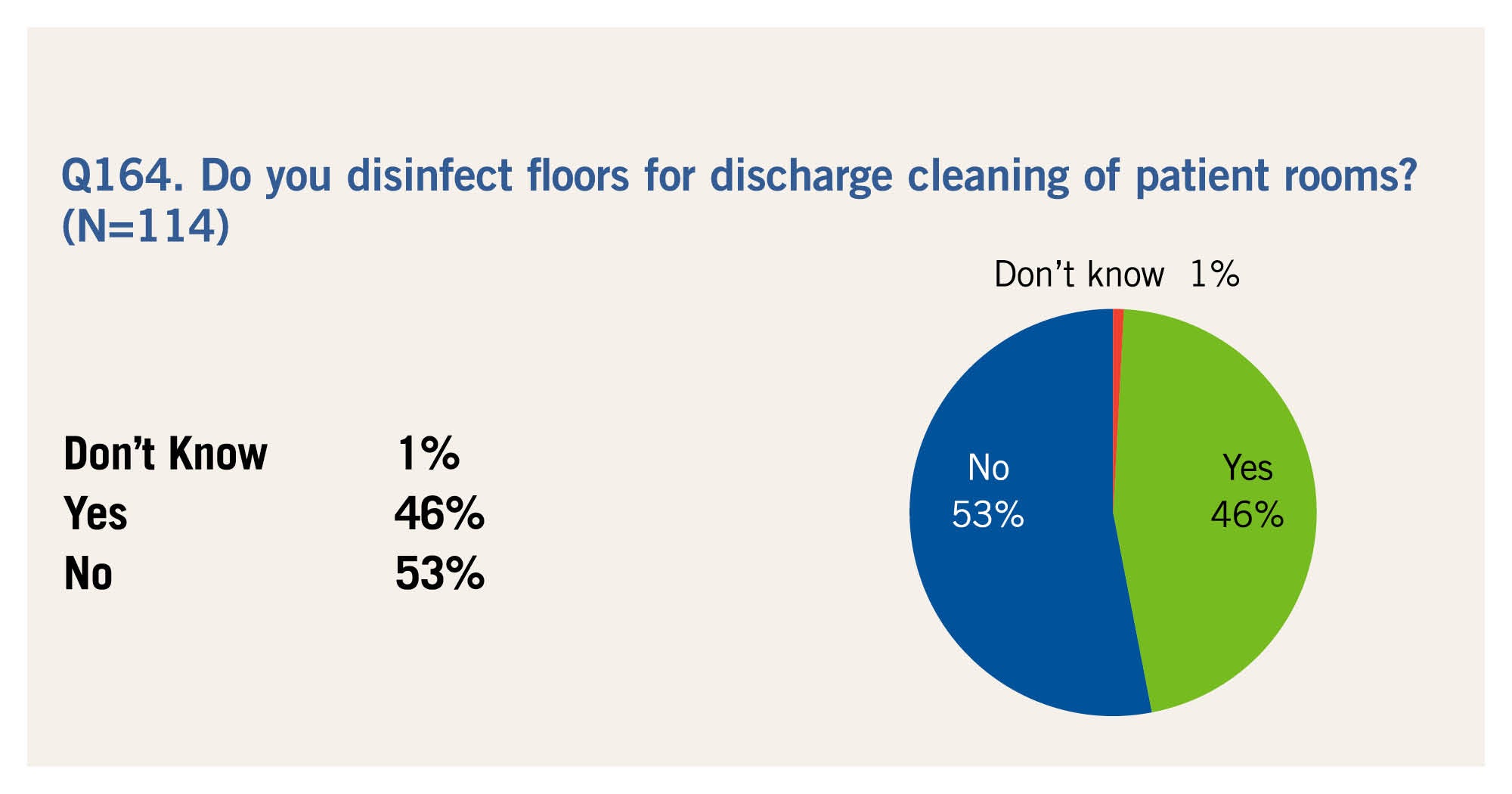Environmental services survey provides valuable data insights

Good data and analysis will support an EVS operation and help build a strong business case for the department.
Image by Getty Images
Membership data is a professional organization’s most valuable asset, followed very closely by intellectual property such as education curriculum, publications and other relevant industry information.
This is particularly true in the case of the Association for the Health Care Environment (AHE) Annual Trends Data Survey Report, other data sets and AHE’s ability to leverage them as a means to deliver value.
Unique insights
The AHE Annual Trends Data Survey Report provides insights unique to health care environmental services (EVS) and is delivered to the industry that supports health care EVS with products, services and solutions.
It is the only report that focuses exclusively on health care EVS with content areas including infection control, floor care, chemicals and waste management, as well as emerging technologies, dashboard metrics, staffing, performance, vendor relationship management and field demographics.
Most of the AHE data has been collected from EVS professionals — both members and nonmembers. The data report is readily available and robust. The data can be compared or cross-tabbed to other AHE data sets and, in the aggregate, the report can serve as a catalyst for unlimited possibilities to generate business value for AHE members, its collaborative partners and for AHE as a business unit.
It’s important that members have access to the data reports to be able to see the impact their responses have on the profession and to inform their own EVS operations before AHE makes the data available to outsiders.
To ensure data fidelity and confidence in the output, the trends data strategy is well developed, cultivated and safeguarded. The survey or data collection instrument as well as the methodology are handled by an unbiased outside market research firm. This ensures the output supports the level of quality and integrity necessary to deliver value for AHE as an organization, for the membership and for the strategic partners.
EVS data focus
Data and data reporting were not a focus for EVS professionals until about 10 years ago. While that may seem like a long time, having comparative baseline data about the profession is an important factor when making department-altering decisions.
Engineering is and has been very much about collecting, measuring, analyzing and benchmarking data, whether it be water or energy consumption. The engineering mind and profession are wired to make an assertion that if you can’t measure it, you can’t report it.
On the other hand, for decades EVS was very much about cleaning and disinfecting to ensure a clean, safe environment for patients and visitors; and all it took to manage EVS was possessing strong people skills.
However, in today’s health care environment, good data and analysis will support an EVS operation and help build a strong business case for just about any area of the department. Data and analysis have assumed a powerful role in decision-making and illustrate how leaders and organizations should adapt to new trends in the field to fully capitalize on next-generation or innovative thinking and practices.
Trends and patterns
When it comes to comparing EVS work to others, using data or the reports incorrectly or out of context can and do often blindside an ill-informed professional or paint an inaccurate picture of EVS operations. Health care facility-based members need to know and understand how to leverage the resulting reports to support their work and the business of health care in their respective organizations.
Before diving into the methodology and value of the AHE Annual Trends Data Survey Report, it is important to distinguish between a trend and a pattern. A trend is the general direction a prevailing tendency or inclination is showing over a period of time.
For example, data might report that between 2014 and 2019, there was a 22% increase in the number of professionals testing ultraviolet-C (UVC) or similar technology to augment cleaning and surface disinfection, and that would be a trend. Conversely, a data pattern defines the way in which the data collected can be structured, indexed and made available for searching. Using the example above, the pattern might be the number of hospitals with over 250 beds that have tested UVC as a quality-assurance option.
One of the primary functions of creating a data pattern is to specify fields that may be extracted from the data collected. Much of AHE’s data identifies trends in the field that can be indexed or searched based on the fields selected when the survey instruments were developed. Knowing how to search the raw data for patterns is as important as the trend itself and may result in interesting patterns that need further exploration.
Features of the AHE Annual Trends Data Survey Report include:
Methodology and process. The survey is conducted online. Typically, there is a 95% confidence interval for a sample size of ±6.5%. Questions with fewer respondents will have a larger confidence interval. All charts in the report reflect current year data. Each AHE Corporate Champion was given the opportunity to present questions for exploration. Because of the competitive nature of sponsors and the intellectual capital involved, questions were selected based on their collective benefit to sponsors as well as their relevance to AHE.
AHE issued the invitations to its health care facility-based membership and other EVS professionals. In conjunction with support from AHE, a market research analyst served as the project lead. To facilitate data tracking, question numbers refer to the order in which the questions were added to the survey, not the order in which they were asked in the current year’s survey, and are kept consistent year-to-year.
Survey purpose. In an ongoing effort to build and maintain strong relationships between AHE and its high-level sponsors, the survey research is designed to explore the trends and emerging data on major issues, challenges and opportunities facing the EVS profession, its related disciplines and the AHE membership.
A market research team interviews the teams of the AHE high-level sponsors to explore what they want and need to know about the business of EVS to ensure their companies remain on the cutting edge of technology, innovation and solutions for the profession to be at the top of its game. Questions are structured to probe and acquire information and data based on what is happening on the ground. The results of the data and the open-ended comments can provide innovative ideas for new product development or improvements on existing products. It also provides insights to what is top of mind in the field and what keeps EVS professionals up at night. AHE cross-tabs many of the data points (the patterns) to inform it on the challenges albeit for specific markets and member types.
This data and information also help AHE inform its organizational strategy and may provide course corrections if the health care environment is changing more quickly than usual. The data and the reports facilitate nimble and pivot behaviors that are keys to strategic and financial success. The trend data report is a win-win for the solutions community and for AHE. The 15-plus years of data provide insights for new program, product and resource development for the benefit of the EVS professionals and their teams.
Respondent demographics. Taking a closer look at the respondents, the vast majority have at least 10 years in EVS and at least 10 years specifically in health care. They are generally between the ages of 45 and 64 and working in acute care hospitals. Fully 75% of respondents represent multiple facilities, and the median number of beds represented in 2019 is 189. However, facilities represented in the survey are a well-rounded mix of sizes, ranging from under 25 beds to over 500. Respondents come from all over the country, with larger pockets in the Midwest and the Northeast. Wisconsin has the largest representation with 10% of the sample. About one-third say they have some college education, and another quarter have a four-year degree or more.
The most common job titles of respondents are director and manager. A little less than one-third report directly to a system vice president, and most say this has not changed in the past two years. The vast majority sit on the infection control committee for their facility or health system. Just over a third say they work directly in EVS, while two-thirds say that EVS is just one of the departments they oversee.
Data comparisons year over year. Overall, the results continue to closely mirror those from previous years. This was determined using the two-sample z-test for proportions at the alpha = 0.05 level of significance. The consistency on many questions helps to highlight those few instances where there are statistically significant differences. From year to year, wording of a question or precoded responses may have been slightly altered to keep current with changes in the field or for clarification or relevance. Those are noted when they occur. Even a minor revision can contribute to a difference in the data.
Verbatim comments. The survey contains a number of open-ended questions that generate a significant amount of narrative commentary. Each question is listed with the verbatim responses unchanged except for spelling and limited grammatical editing for clarity.
It is standard procedure to leave verbatim responses in the original form as submitted because context and format can sometimes provide insights to the respondent. This includes when respondents refer to their departments as EVS, ES or other terms.
A comment followed by (#X) indicates the number of times an exact match or very similar comment was made. Those with the highest frequencies will be placed at the top of the list. Similar comments may be listed individually if they contain a brand name, if it appears that the terminology may be different or important, if a specific thought was being expressed or if they contained several different ideas.
Data is king
The 2019 report offered in April 2020 represents the 17th year AHE has generated a report outlining the top current and future trends as well as pointing out major changes in the field.
During the past two years, select markets of nonmembers were invited to participate in the survey, yet the results continue to closely mirror those of previous years. The year-over-year consistency on many questions helps to highlight those few instances where there are differences or changes.
The 17 years’ worth of data on the key topical areas within EVS has provided rich information for the Corporate Champions as well as AHE. Before year end, AHE will be talking with its sponsors and some of its most- and least-engaged members to determine whether AHE will continue down this path or move in a new direction of equal or greater value to sponsors and AHE.
Data is king and a primary driver for intelligent, informed decision-making, so AHE isn’t anticipating wholesale changes. One thing is for sure, AHE members will be the first to know!
Offering insight with unmatched value
The Association for the Health Care Environment (AHE) Annual Trends Data Survey Report provides insights unique to the field of health care environmental services (EVS), delivered to the professionals and suppliers that support health care EVS with products, services and solutions.
It is the only report that focuses exclusively on the field of health care EVS with content areas including infection control, floor care, chemicals and waste management, as well as emerging technologies metrics, staffing, performance, vendor relationship management and field demographics.
Each year, AHE’s research firm provides AHE’s strategic collaborators, or Corporate Champions, with the opportunity to contribute to the Annual Trends Data Survey Report. Each Corporate Champion collaborator is granted a one-on-one interview with AHE’s research team to determine where knowledge gaps may be present and request specific data to be collected. The AHE research team then determines if survey questions need to be updated, replaced, added or removed based on the merits of each of the desired insights.
Once the survey has been designed and launched, data has been compiled, information has been assessed and the report has been written, the real work begins. The AHE Annual Trends Data Survey Report is disseminated to the AHE Corporate Champions. They have six months of exclusive access to the report. During this time, AHE holds meetings with each Corporate Champion to determine where there are opportunities for additional collaboration based on AHE Annual Trends Data Survey Report findings.
After six months, the AHE Annual Trends Data Survey Report is available upon AHE approval for purchase by EVS health care industry product and services providers who are looking to support and engage with AHE, its members and the EVS field at large by contacting AHE at ahe@aha.org or 312-422-3860.
Patti Costello is executive director of the Association for the Health Care Environment. She can be contacted at pcostello@aha.org.




